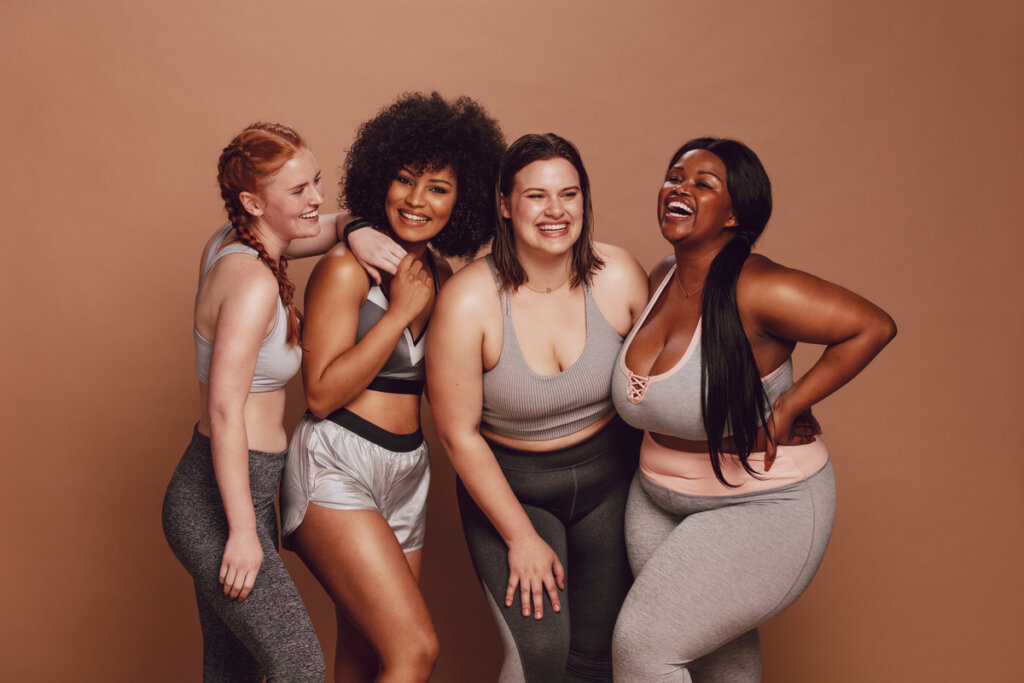Body Neutrality: Accepting Your Body as It Is

Body neutrality is a relatively recent movement that emerged as an alternative to body positivity. The latter defends that all bodies are beautiful and that we should love them as they are. In contrast, bodily neutrality doesn’t seek to celebrate the body, but to accept it as it is, without being forced to love it.
The culture of body positivism has been criticized. For instance, some say that there are days when we feel dissatisfied with our physical appearance and that it isn’t necessarily a bad thing. However, if we’re continually telling ourselves that we must love our bodies, it’s possible that, sooner or later, we’ll feel so uncomfortable that we eventually won’t even want to look at them.
Some specialists have even pointed out that body positivity can be detrimental to our mental health. That’s why body neutrality has been increasingly gaining in popularity. This movement, unlike body positivity, doesn’t pretend that we should love our bodies at all times, but simply that we accept them. Furthermore, that we let go of all the expectations and anxiety that not loving them can cause.
Thus, bodily neutrality eliminates the pressure generated by constantly trying to love our bodies, which can generate frustration if our expectations aren’t met.

Body neutrality
The term, body neutrality was coined around 2015 in response to body positivity, when bloggers, celebrities, and some specialists began to decouple the concept of self-esteem from physical appearance.
Body neutrality seeks that we accept our own bodies as they are, without feeling obliged to love them all the time. Also, instead of focusing on physical appearance (arguing that all bodies are beautiful), it promotes functional recognition of the body.
In other words, recognizing that the body can do great things, beyond physical appearance. For instance, running, hugging our loved ones, giving birth to a child, taking us to many places in the world, providing us with pleasure, etc.
Body neutrality and mental health
The goal of body neutrality is to heal our relationships with ourselves. Various specialists have expressed the benefits of this movement on our mental health. Some of them are as follows:
Less judgmental
If we acquire a less critical mindset about the appearance of our bodies, we’ll stop judging ourselves and others.
More empathy
Body neutrality prevents us from being too quick to judge others and allows us to develop our sense of empathy. In addition, it helps us to act from friendlier internal positions, instead of having competitive mentalities.
Less stress
When we decide to accept our bodies for what they are and for what they’re capable of doing, our stress levels decrease significantly. This helps us feel more relaxed and in control.
Improved moods
If we’re constantly thinking that our bodies (or our relationships with them) aren’t living up to our expectations, we’re likely to become frustrated and moody. By accepting our bodies, without feeling pressurized to love them, we’ll find ourselves in better moods, more often, in fact, than we might’ve even thought possible.
How to practice body neutrality
If you want to practice body neutrality, here are some tips that’ll help you integrate this perspective into your life.
1. Talk to yourself
Assuming neutrality toward your body won’t happen overnight, nor will it feel natural at first. A good way to start is by talking to yourself about your own body. Here are some ways to do it:
- Acknowledge the ways your body works well. Tell yourself things like “My arms are strong,” “My legs can ride a bike for ages,” or “My brain thinks really fast.”
- At your own discretion, accept the ways in which your body doesn’t work well. Try to overcome the emotional burden that this causes you. For example, allow yourself to acknowledge facts like “My knees don’t bend so easily” or “My body doesn’t fit comfortably in restaurant chairs”. This can help you accept these aspects of your life without trying to hide or be ashamed of them.
2. Avoid talking about others’ bodies
It’s quite common to make comments about the physical appearance of others. Although you don’t mean to offend, you can often hurt people by pointing out certain aspects of their bodies. For example, telling them that they’re too thin or too tall.
If you want to cultivate body neutrality, avoid starting discussions about others’ bodies and deflect the conversation if such topics come up.
3. Adjust your diet to your well-being
The notion of intuitive eating fits perfectly with body neutrality. It’s based on the assumption that your body knows the right amount and the right kind of food for it.
Body neutrality doesn’t recommend a specific diet. So, you can choose an eating plan that makes you feel good.

4. Practice physical exercise that you enjoy
All bodies benefit from physical activity. However, the fitness industry has always tended to focus on weight loss, body shape change, and fat burning.
Accepting your body size and shape will free you from doing exercises that you don’t enjoy, but do anyway in order to burn fat and calories. By adopting body neutrality, you choose which activities you enjoy doing to get some exercise and stop doing them once you’re tired or aching.
Finally, bear in mind that body neutrality isn’t a one-off activity. Like any process, it can be long and slow. That said, the benefits are really rewarding.
All cited sources were thoroughly reviewed by our team to ensure their quality, reliability, currency, and validity. The bibliography of this article was considered reliable and of academic or scientific accuracy.
- Pedraz, M. (2010). La construcción social del cuerpo sano. El estilo de vida saludable y de las práctics corporales de la forma como exclusión. Nómadas. Critical Journal of Social and Juridical Sciences, 28(4) ISSN: 1578-6730. Disponible en: https://www.redalyc.org/articulo.oa?id=18118913007
This text is provided for informational purposes only and does not replace consultation with a professional. If in doubt, consult your specialist.








